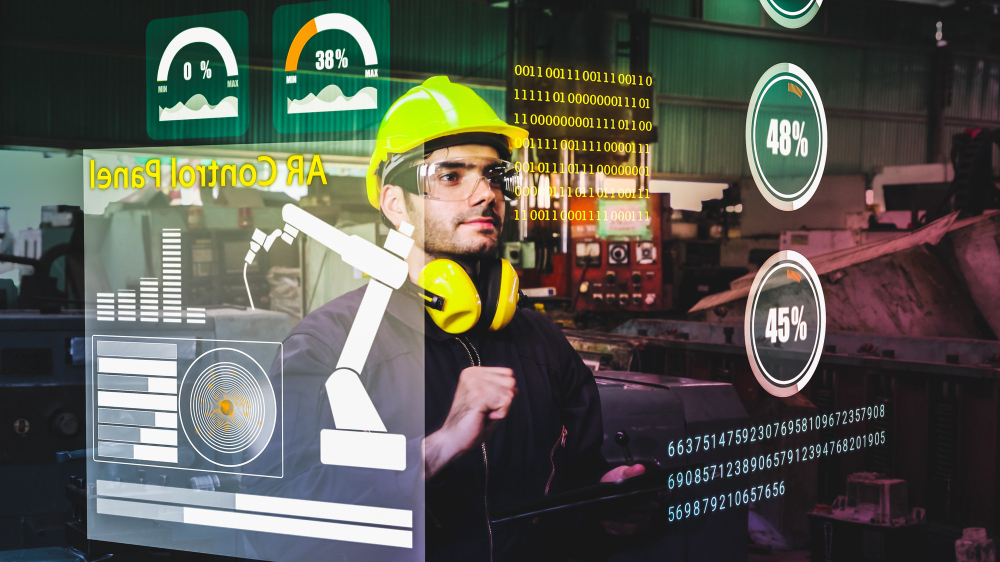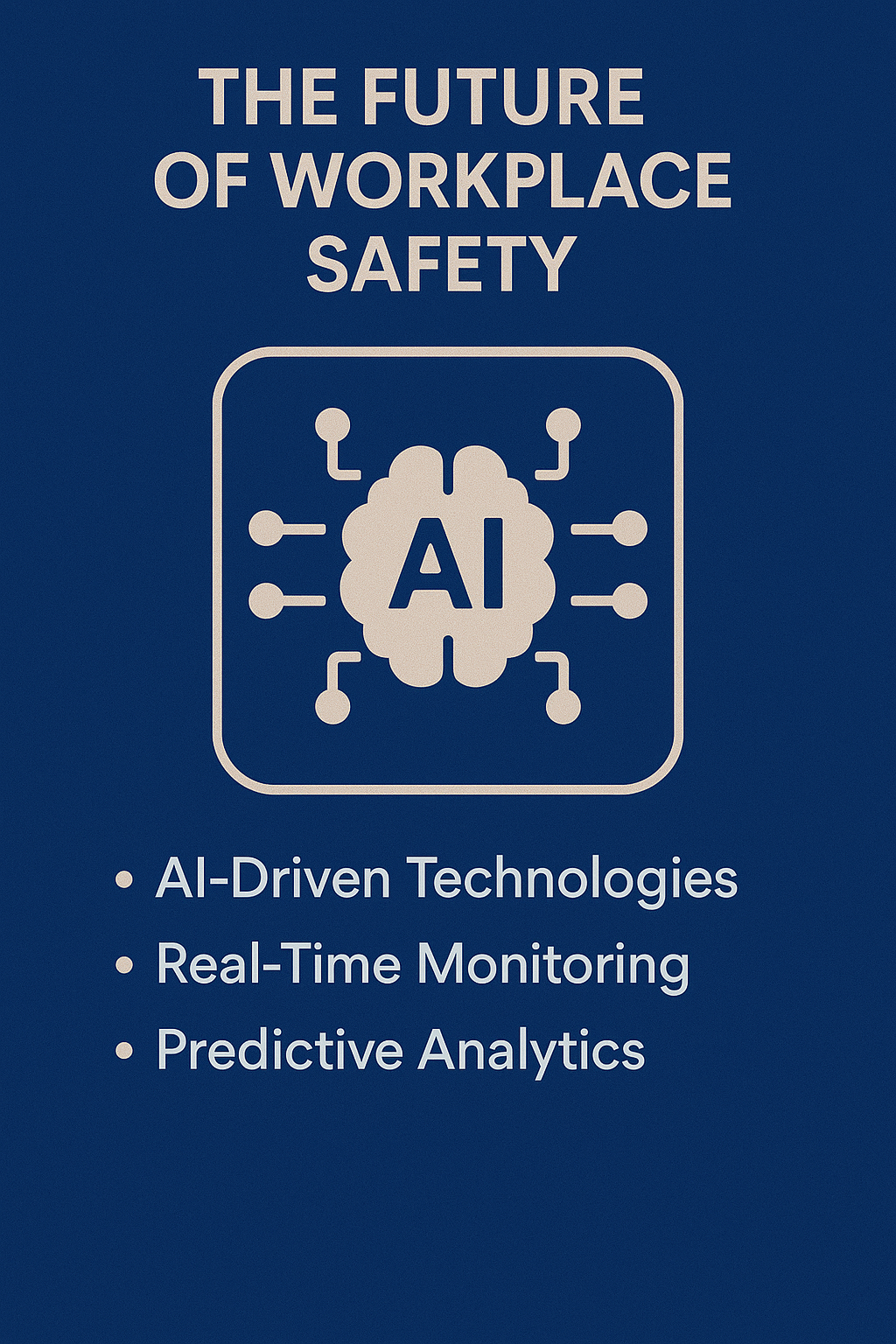The Future of Workplace Safety: Navigating Hazards with Vision AI

See It In Action

Safety AI Software in Action
See how Visionify's Safety AI Software monitors workplace safety in real-time
Example Videos
Safety AI Software in Action
See how Visionify's Safety AI Software monitors workplace safety in real-time
Forklift Zone Monitoring with Vision AI
See how Vision AI monitors forklift zones in real-time to prevent accidents
Hard Hat Compliance in Manufacturing
Vision AI PPE Compliance for Manufacturing
Key Takeaways
- Historical Evolution: Workplace safety has evolved from rudimentary practices to sophisticated AI-driven solutions
- Human Error Factor: With human error responsible for 80% of workplace accidents, Vision AI provides crucial oversight
- Proactive Prevention: Vision AI shifts safety from reactive responses to proactive hazard prevention
- Real-time Monitoring: Continuous surveillance detects hazards as they develop, enabling immediate intervention
- Ethical Implementation: Balancing safety benefits with privacy considerations ensures responsible deployment
The Evolution of Workplace Safety: From Reactive to Proactive
In the rapidly evolving landscape of business, cutting-edge technologies like AI are catalyzing monumental shifts in traditional practices. One critical domain benefiting from this technological revolution is workplace safety—long a cornerstone of modern organizational practices and integral to fostering employee well-being.
The prowess of AI, particularly its capability to proactively detect and address potential threats, has emerged as a game-changer for Environment, Health, and Safety (EHS) professionals. As Vision AI systems address safety concerns in real-time, a future emerges wherein employees experience enhanced well-being while businesses elevate operational efficiency and curtail costs.
 Vision AI systems can continuously monitor multiple safety factors simultaneously
Vision AI systems can continuously monitor multiple safety factors simultaneously
Tracing the Path: Evolution of Workplace Safety Through History
Pre-Industrial Era: Rudimentary Beginnings
In the pre-industrial era, workplace safety was often rudimentary and lacked standardized regulations. With a limited understanding of safety hazards, workers faced numerous risks in their daily tasks:
- Blacksmiths worked with open flames and molten metal without proper protective gear
- Textile workers in home-based workshops faced dangers from manually operated machinery
- Early factories lacked ventilation and proper machinery safeguards
Hazards often went unnoticed until accidents occurred, resulting in injuries or fatalities. The absence of standardized safety protocols meant that employees navigated work environments with limited guidance on risk prevention.
The Industrial Revolution: Pioneering Safety Regulations
The Industrial Revolution brought significant advancements in technology and production, but also increased workplace hazards. Workplaces were characterized by:
- Unsafe conditions in cramped, poorly ventilated factories with inadequate lighting
- Long working hours resulting in fatigue, increasing the likelihood of accidents
- Lack of safety measures for rapidly expanding machinery and industrial processes
The harsh realities of dangerous work conditions prompted the emergence of the first safety regulations. Early labor movements advocated for better working conditions and the implementation of safety measures to protect workers from accidents.
Gradually, governments introduced reforms, and industries began to recognize safety's importance for productivity and accident reduction. This period laid the foundation for modern occupational health and safety standards developed in subsequent centuries.
From Trial and Error to Regulatory Frameworks
Before the widespread adoption of safety regulations, identifying hazards relied heavily on trial and error. Accidents served as unfortunate teachers, with workers and employers learning from the consequences of their actions.
As the need for safer work environments became more evident, governments and industries started developing regulatory frameworks. These regulations mandated the implementation of safety equipment, training, and protocols to minimize risks and protect workers' well-being.
Why Advanced Safety Solutions Are Needed Today
In today's dynamic landscape, workplace safety has achieved notable milestones, yet novel challenges continue to emerge. Modern industries are marked by intricate designs, interconnected processes, and fast-paced technological growth. As processes become more complex, potential risks and hazards become multifaceted and less predictable.
Rising Complexity of Work Environments
Modern workplaces often involve intricate machinery, diverse processes, and numerous potential hazards. While effective to a certain extent, traditional safety measures struggle to keep pace with this complexity.
Vision AI can comprehensively monitor and analyze complex workspaces, identifying subtle risks that might be overlooked by manual inspections alone.
Human Errors: A Critical Factor in Workplace Accidents
The role of human errors in workplace safety cannot be overstated. Despite technological advancements, human actions and decisions remain a significant contributing factor to accidents.
According to the International Labor Organization (ILO), human error is responsible for an estimated 80% of workplace accidents worldwide. These errors encompass a range of factors, from lack of awareness and training to fatigue, distraction, and misjudgment.
Industry-specific statistics reveal the magnitude of this challenge:
- 58% of accidents in the construction industry are attributed to human factors (OSHA)
- Over 90% of accidents in manufacturing can be traced back to human errors (National Safety Council)
In light of these alarming figures, Vision AI emerges as a game-changing force in workplace safety.
Speed of Operations and Decision-Making
In today's fast-paced industries, quick decision-making is essential. Traditional safety protocols that rely on periodic inspections cannot match the speed at which operations are conducted.
Vision AI operates in real-time, enabling immediate detection and response to potential hazards. This speed is crucial in preventing accidents and minimizing the impact of safety breaches, aligning seamlessly with the rapid pace of modern business.
Vision AI: Paving the Future of Workplace Safety
The trajectory of workplace safety is unmistakably veering towards an era dominated by Vision AI. This cutting-edge technology holds the promise of revolutionizing how industries safeguard their workforce, making it a truly futuristic solution that goes beyond the limitations of traditional safety measures.
Beyond the Surface: Unveiling the Layers of Vision AI
At first glance, Vision AI might seem like a tool solely designed to detect and prevent accidents. However, its capabilities stretch far beyond the obvious. By harnessing the power of deep learning and image recognition, Vision AI can:
- Identify potential hazards before they cause accidents
- Predict patterns of risk based on historical data
- Analyze trends to improve safety protocols
- Provide insights into workflow optimization
This deeper level of understanding enables businesses to address safety concerns while proactively enhancing operational efficiency.
 Future of Workplace Safety Infographic
Future of Workplace Safety Infographic
The Synergy of Humans and Machines: Collaborative Safety Enhancement
Contrary to common misconceptions, Vision AI isn't here to replace human workers but to complement them. The true potential of Vision AI lies in its ability to work alongside human employees, forming a synergistic partnership that amplifies overall safety measures.
With machines tirelessly monitoring work environments for potential risks, human workers can focus on tasks requiring critical thinking and decision-making, ultimately creating a harmonious workplace where safety and productivity coexist.
Real-time Responses: Averting Dangers Before They Escalate
One of the most significant advantages of Vision AI is its capacity for real-time responses. Traditional safety protocols often involve manual checks and periodic inspections, leaving room for unforeseen hazards to escalate.
Vision AI, equipped with real-time monitoring capabilities, can instantly detect anomalies and alert relevant personnel. This prompt response not only prevents accidents but also minimizes downtime, demonstrating how technology can be a proactive safeguard in high-risk environments.
From Reaction to Prevention: A Paradigm Shift in Safety Culture
Historically, workplace safety has been more reactive than proactive. Incidents occur, investigations follow, and improvements are made after the fact.
Vision AI has the potential to flip this narrative by ushering in a culture of prevention. By identifying potential hazards before they manifest as accidents, businesses can prioritize risk mitigation strategies and create a safer environment for their employees.
This shift isn't just technological; it's a cultural transformation that underscores an organization's commitment to its workforce.
Vision AI vs. Traditional Approaches: A Paradigm Shift
Vision AI introduces a transformative shift in hazard identification, transcending traditional methods in several key ways:
Continuous Monitoring vs. Periodic Inspections
Traditional safety approaches rely on scheduled inspections that provide only snapshots of conditions at specific moments. Vision AI continuously monitors the environment, detecting hazards as they develop rather than discovering them during the next inspection cycle.
Proactive Prevention vs. Reactive Response
Conventional safety methods often address hazards after incidents occur. Vision AI identifies risks before they cause accidents, shifting the focus from reaction to prevention.
Data-Driven Insights vs. Subjective Assessments
Traditional approaches may rely on subjective human judgments that vary between inspectors. Vision AI analyzes visual data objectively, identifying patterns and correlations that might escape human notice and providing consistent assessment across all monitored areas.
Augmentation vs. Replacement
Vision AI doesn't replace human safety professionals—it augments their capabilities. The technology handles continuous monitoring and initial hazard detection, allowing safety personnel to focus on addressing identified risks and implementing improvements.
Implementing Vision AI: Practical Considerations
Industries at the Vanguard
Various industries are at the forefront of embracing Vision AI for workplace safety:
- Manufacturing: Monitoring PPE compliance, machine guarding, and ergonomic practices
- Construction: Detecting fall protection issues, unsafe equipment usage, and structural hazards
- Warehousing: Tracking forklift operations, loading dock safety, and proper material handling
- Healthcare: Ensuring proper protocols in patient handling and hazardous material management
- Oil & Gas: Monitoring remote operations and detecting potential equipment failures
Navigating Implementation Challenges
While the potential of Vision AI is undeniable, its seamless integration comes with challenges:
- Initial Investment: The upfront costs of hardware, software, and integration
- Technical Infrastructure: Ensuring adequate network capacity and computing resources
- Algorithm Training: Developing systems that recognize industry-specific hazards
- Change Management: Helping employees understand and embrace the new technology
- Privacy Considerations: Balancing safety monitoring with employee privacy concerns
Organizations that address these challenges thoughtfully can successfully implement Vision AI systems that significantly enhance workplace safety.
The Ethical Frontier: Balancing Surveillance and Privacy
While the benefits of Vision AI for workplace safety are undeniable, it also raises important ethical considerations. The fine line between surveillance for safety and invasion of privacy must be carefully navigated.
Striking the right balance requires:
- Transparent communication with employees about the purpose and extent of monitoring
- Focus on detecting hazards rather than monitoring individual performance
- Implementation of robust data protection measures
- Compliance with relevant privacy regulations
- Regular review of monitoring practices to ensure they remain appropriate and necessary
As technology continues to evolve, ethical guidelines will play a pivotal role in shaping the responsible implementation of Vision AI.
Conclusion: A Glimpse into the Vision AI-Enhanced Future
The future of workplace safety is unquestionably intertwined with the transformative potential of Vision AI. As industries embrace these advancements, they move closer to a future where:
- Accidents are significantly reduced through proactive hazard identification
- Employee well-being is prioritized through continuous safety monitoring
- Operational efficiency improves as safety-related disruptions decrease
- Data-driven insights lead to ongoing safety improvements
- A culture of prevention replaces reactive safety approaches
Vision AI's journey in workplace safety is a testament to human innovation—a vision of a safer tomorrow forged by technology's potential to safeguard lives and transform workplaces. By embracing this technology and addressing the associated challenges with a mindful and ethical approach, industries can pave the way for safer, more efficient, and ultimately more productive work environments.
Ready to enhance workplace safety with Vision AI technology? Contact Visionify today to learn how our solutions can help identify hazards, ensure compliance, and create a safer work environment.
Frequently Asked Questions
Find answers to common questions about this topic
Want to learn more?
Discover how our Vision AI safety solutions can transform your workplace safety.
Schedule a DemoSchedule a Meeting
Book a personalized demo with our product specialists to see how our AI safety solutions can work for your business.
Choose a convenient time
Select from available slots in your timezone
30-minute consultation
Brief but comprehensive overview of our solutions
Meet our product experts
Get answers to your specific questions
Related Articles
Subscribe to our newsletter
Get the latest safety insights and updates delivered to your inbox.


